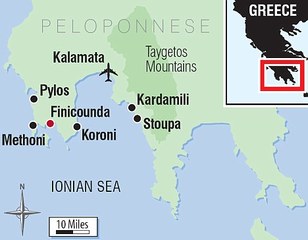20 knockout things to see in the southern Peloponnese
WHEN we set out on our Greek adventure in 2010, we picked the southern Peloponnese, as it promised to be very authentic and unspoilt.
For beauty, diversity, and a touch of edginess, this region is hard to beat. It is rich in history, myth, Homeric legends, and blessed with beautiful beaches, remote hillside villages, ruined fortresses and fortified towers. It has the lofty Taygetos Mountains, lush orange and olive groves and is famous of course for its Kalamata olives and its outstanding oil.
The southern area of the Peloponnese is comprised of three ragged peninsulas, with the Messinian on the left, including the capital of the region Kalamata, at the head of the gulf and much of the middle peninsula, known as the Mani.
The Mani is a fascinating region, with the imposing Taygetos Mountains forming a backdrop. At the southern-most point of this peninsula is Cape Tainaron and the mythical Cave of Hades, mentioned in ancient texts. The right-hand peninsula is the region known as Laconia with its main city of Sparta and the Gibraltar of Greece, Monemvasia, on its eastern coast.
From our three-year stay in this region we put together our 20 favourite things to see and do:
For beauty, diversity, and a touch of edginess, this region is hard to beat. It is rich in history, myth, Homeric legends, and blessed with beautiful beaches, remote hillside villages, ruined fortresses and fortified towers. It has the lofty Taygetos Mountains, lush orange and olive groves and is famous of course for its Kalamata olives and its outstanding oil.
The southern area of the Peloponnese is comprised of three ragged peninsulas, with the Messinian on the left, including the capital of the region Kalamata, at the head of the gulf and much of the middle peninsula, known as the Mani.
The Mani is a fascinating region, with the imposing Taygetos Mountains forming a backdrop. At the southern-most point of this peninsula is Cape Tainaron and the mythical Cave of Hades, mentioned in ancient texts. The right-hand peninsula is the region known as Laconia with its main city of Sparta and the Gibraltar of Greece, Monemvasia, on its eastern coast.
From our three-year stay in this region we put together our 20 favourite things to see and do:
1: Grab some ancient ambience
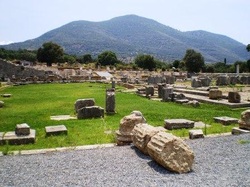
Situated on a plain north west of Kalamata, Ancient Messene is one of the best archaeological sites in the Peloponnese, beneath towering Mt Ithome and Mt Eva. The ancient city was supposedly founded around the 10th century BC by Queen Messene of Argos (the town, not the shopping chain) but fell to the Romans in 146BC. The archaeological work still continues but top things to see are the Asklepion Temple, the Fountain House and the huge ancient stadium with colonnades. The present-day village here is Mavromati, with the ancient fountain of Klepsydra on its main street.
2: Dive into cool pools
Polylimnia is a beauty spot west of Kalamata (on the road to Pylos), which has a towering escarpment with a waterfall that floods a series of pools on the way down from the size of footbaths to the gorgeous diving pool near the top. You ascend a gorge on a narrow winding path to various levels, so good walking shoes are needed and pack a swimming costume because once you get to the top, on a hot day, you will want to leap into the top pool.
3: Kalamata - by day
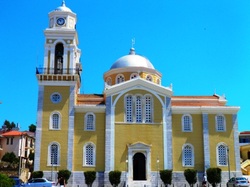
Kalamata, at the head of the Gulf of Messinia, is buzzy and modern but to get into the life and soul of this place, go to the old town beneath the Frankish castle (the Kastro), where there are museums like the Archaelogical Museum on Benaki Street and many fine churches, including the cathedral, the Church of the Ipapanti Tou Sotiros (left). Get folky at the big farmers’ market on Wednesdays and Saturdays, where most Kalamatans shop and which has a huge array of local produce.
Visit www.kalamata.gr
Visit www.kalamata.gr
4: Kalamata - by night
The seafront at Kalamata is the coolest place to be day or night, with dozens of cafes, bars and pastry shops rubbing shoulders along Navarinou Street. The marina area beyond Kalamata harbour has some of the best tavernas in the city, including the popular Argo. The historic centre, near the Kastro, also has some lively, traditional tavernas (Platonas, Ta Rolla) and many cafes and ouzeries for a shot of ouzo and some nibbles. In the summer, the amphitheatre in the Kastro is one of the main venues for the yearly Dance Festival and other arts events, including Greek rock bands and well-known Greek singers and composers.
5: Have a Shirley Valentine moment at Kitries
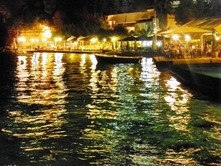
Kitries harbour is just a half-hour drive on the coastal road south of Kalamata, in the Mani region (middle peninsula). It is tucked away at the end of Kitries Bay, past sandy Sandova beach. Here you can pass a few glorious hours in one of the two family run fish tavernas (Gaitanaros and Mimi’s), with a table set right at the water's edge. Just like Shirley Valentine in the film, you can sit here and watch the sun set behind the Messinian peninsula or check out the small fishing caiques that pull up here regularly to land their catch. Heaven!
6: In the footsteps of donkeys
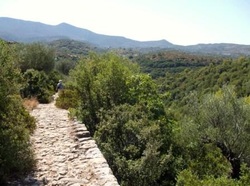
The Mani region is criss-crossed by a network of old kalderimia, stone mule paths that once connected most of the villages. Although they are still used by many local farmers on donkeys, they are also popular with walkers. One of the most spectacular is the route from Sotirianika on the Biliova path up to the lofty village of Altomira. Another goes from Sotirianika to the town of Kambos, over the Koskarakas river. Make sure you wear sturdy walking shoes, as these stone paths are unforgiving on the feet. For more information on walking in the Mani refer to the excellent book Inside the Mani by Matthew Dean www.insidemani.gr
7: Take to the gorgeous gorges
The Taygetos Mountain range makes the Mani region of the Peloponnese an outstanding area of natural beauty. One of its features are the deep, long gorges like the famous Rindomo and Viros. To get to the Rindomo Gorge, take the road from Kambos town to the village of Kendro and nearby Anatoliko. The gorge will be marked from here. Continue along the mountain road from Kendro to the village of Tseria and you will find a path from here down to the Viros Gorge. Make sure you take maps and provisions as these two gorges can be rugged and dangerous in parts. For walking maps and advice, see the book mentioned above, Inside the Mani, and its website.
8: Skulduggery at Trikotsova Castle
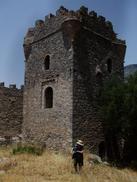
The early 19th-century Trikotsova Castle at Haravgi, off the Kalamata to Stoupa road, isn't one of the oldest castles in the Mani region, but it is one of the most spectacular, with sweeping views of Kalamata and the Taygetos mountains. The castle's founder was Giorgios Kapetanakis, who was one of the leaders of local Maniat clans, and one of his descendants is buried in a vault at the side of the castle, where the stone lid has slipped to chillingly reveal a weathered skull. It's all a bit like a spooky Sir Walter Scott novel. Explore the inside of the castle grounds with its quaint little chapel, usually unlocked. The nearby village of Haravgi is also worth a visit with several churches and great views.
9: Saints and mermaids
The Mani abounds with wonderful Byzantine churches, many with well-preserved frescos. One of the most accessible is Ayios Theodoros, in the town of Kambos, right on its main street. This church is famous for its outstanding frescoes, including the the Panayia Platitera (Wide Wings of Heaven). There are many frescoes of saints and martyrs, and the charming double-tailed mermaid, a distinctive image in the Mani. Kambos also has a Mycenaean tombs by the main road and a fortified tower.
10: Fresco frenzy
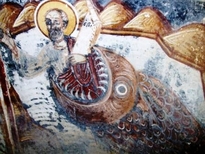
We've put another ecclesiastical venue on this list as the chapel at the monastery of Ayios Yiorgos (St George), on the outskirts of the village of Proastio, south of Kardamili, has yet more stunning examples of Byzantine frescos and is in a wonderful location with views of the Taygetos mountains. The main fresco in the chapel of St George slaying the dragon is outstanding as are many of the others, though many are also crumbling and faded so it's as well to see them now while they last. From the church you can walk along a kalderimi to the nearby villages of Petrovouni and Ayia Sophia.
11: Laconian shipwreck
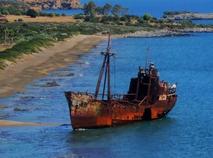
If you drive east along the coast road from fishing town of Gytheio, at the head of the Laconian Gulf, in Laconia, the beached and burnt-out wreck of the MV Dimitrios hoves into view on Glyfada Beach. This vessel caught fire and ran aground on the beach around 30 years ago - and has never been salvaged. There are a couple of tavernas on the beach for lunch after a swim. Gytheio is also a delightful spot with its rows of gelato-coloured waterside houses and a fine selection of fish tavernas.
12: City under the waves
One of the most mysterious stretches of water in Greece is at the foot of the Laconian peninsula, just north of Neapolis. The archaelogical site of Pavlopetri is well hidden - under water - and is reputed to be the world's oldest submerged city, established around 5,000 years ago, and flourishing in the later Mycenaean Age. Walk along Pounda beach (near Viglafia) opposite the harbour and you will find some traces of the city right in the shallow water. To see more dramatic remains of the city you will need to get one of the local fishermen to take you out in a boat for a snorkel or dive. The ferry from the harbour crosses regularly to the tiny island of Elafonisos, which has glorious sandy beaches.
13: Rock on at Monemvasia
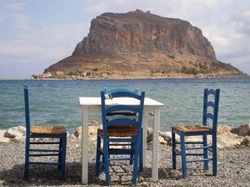
Still a little-known rocky outcrop on the east side of the Laconian peninsula, Monemvasia is often called the Gibraltar of Greece. This massive rock island on the Myrtoan Sea split from the mainland in 375AD during an earthquake. Its tiny town of Kastro has thick fortified walls and was well protected against various invaders. The Kastro is now a world heritage site with narrow cobbled streets and most of its stone houses and churches date back to the 12th century, including the atmospheric church of Ayia Sophia perched on a cliff edge at the top. This is a stunning, romantic getaway with small, friendly tavernas. Ideal for honeymooners. See www.monemvasia.com
14: Flash the cash at Costa Navarino
The first stage of the 1.2 billion euro Costa Navarino tourism project opened in May 2010, just north of the town of Pylos on the Messinian peninsula. This five-star resort is one of the best in Greece and features two hotel complexes and the two world-class golf courses. The resort is right on the beach, looking out to the Ionian Sea. It's not cheap to stay here - from around 400 euros a night - but many rooms have their own infinity pool. The hotels are elegant with several Greek and international restaurants and a world-class spa. See www.costanavarino.com
15: Go crazy at Koroni and Methoni
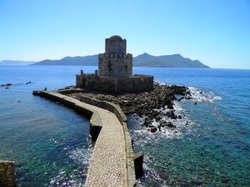
The seaside towns of Koroni and Methoni lie at opposite sides of the Messinian peninsula, yet their history is closely aligned and both have Venetian castles. Methoni Castle is the biggest and most impressive of the two, surrounded on three sides by the sea, with a dry moat on its landward side and a monumental gate (left) built in 1700. Koroni Castle sits on a bluff and is also surrounded by the sea on three sides. Inside its stone walls are tiny houses and churches, with a network of underground passages. Both towns have lovely settings and a big variety of tavernas and cafes along their shorelines.
16: History and glamour at Kardamili
The village of Kardamili, on the Mani peninsula, is a popular spot for tourists and locals and featured in the recent Hollywood movie Before Midnight. It was home to the late Patrick Leigh Fermor, who wrote the definitive book on the area called The Mani. This village has a long history and was mentioned in Homer's Iliad. Visit the old part of Kardamili just behind the modern village, which was once the stronghold of the powerful Mourtzinos family from the 17th century. Many of the old buildings have been restored, including the main tower house with its famous Maniot stone carvings. Stroll from here up to the village of Ayia Sophia on a kalderimi. See www.kardamili-greece.com
17: Nourish your soul in old Mystras
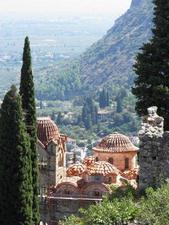
The remnants of the Byzantine city of Mystras is a scramble of ruins and restored churches down a steep rocky outcrop of the Taygetos Mountains about 6km from the city of Sparta. Mystras was established in the 13th century and was the last great outpost of the mighty Byzantine empire. Many of the important churches here (the Perivleptos, the Pantanassa) were built in the 14th century and have some of the finest frescos in Greece. Even if Byzantine churches aren't your thing, this is a lovely, UNESCO-listed site to explore. If you love Greek icons, why not have one of your own, specially designed and painted according to traditional Byzantine methods by artist Maria Tsimboka, who has a workshop and gallery called Porfyra in the modern town of Mystras, nearby, where you can also watch her at work. Inspiring! See www.porfyraicons.gr
18: Beaches and birds
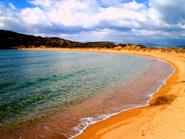
The pretty village of Gialova, on Navarino Bay just north of Pylos, has a gem of a beach, with plenty of shady trees and nearby tavernas. Just north of Gialova is the famous horseshoe-shaped Voidokoilia beach (left), with its pale water and soft sand. Nearby is a famous
wetland, a haven for 250 species of birds and other wildlife including loggerhead turtles, and it is also the only habitat of the African chameleon in Europe.
wetland, a haven for 250 species of birds and other wildlife including loggerhead turtles, and it is also the only habitat of the African chameleon in Europe.
19: Halfway to heaven at Ano Verga
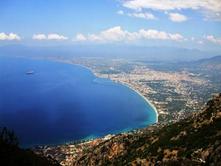
If you want to get your head in the clouds, then drive up to the village of Ano Verga, which is perched 3,000ft above sea level in the Taygetos mountains just south-east of Kalamata. Take the turn-off through Sotirianika off the main Kalamata-Stoupa road and travel up a long and winding road until you reach the village. There are stunning views of Kalamata from here and the whole western flank of the Mani peninsula. There is a café and a taverna (summer weekends only) here.
20: Halfway to Hades at Cape Tainaron
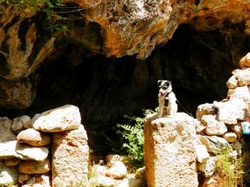
It might not seem like a holiday highlight, taking a trip to hell, but Cape Tainaron, at the tip of the Mani Peninsula, is the Cave of Hades (Wallace at the entrance, left), the mythical Underworld. Situated near the Bay of Asomati, it was said that Hades was the place where the souls of the dead were ferried across a subterranean river to their final resting place and many ancient myths surround it. There is a walk from here to a lighthouse which is the southernmost point of mainland Europe. Outstanding!
If you enjoyed reading about these 20 great places, many of them have featured on our blog entries (click on Blog bar at top of page) and in the book Things Can Only Get Feta by Marjory McGinn (see Greek Book bar at top of page) .
A couple of our travel features on the southern Peloponnese:
The Scotsman - Mani delights
The Herald-Sun, Melbourne - Monemvasia lures lovers
The Herald-Sun, Melbourne - Monemvasia lures lovers
Images of the southern Peloponnese
The first video below features a selection of favourite photographs we have taken of the region, including Kalamata, the Mani, Mystras, Gytheio, Monemvasia, Areopolis and Ancient Olympia, and also the nearby island of Kythira. The second video shows the annual procession of the icon of the Virgin Mary, which takes place at the Ipapanti tou Sotiros (Kalamata Cathedral) on February 2.
© Text and photographs copyright of the authors 2010-2024.
No reproduction of text or images without written permission.
No reproduction of text or images without written permission.
